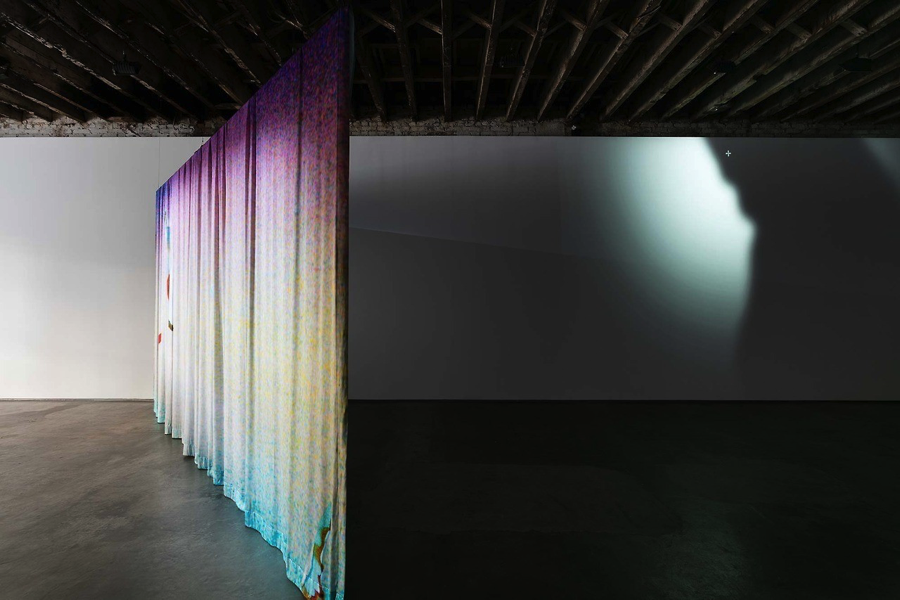Victoria Fu is an artist based in San Diego who makes moving image installations using film and video. In creating her work, Fu weaves clips and sound from the internet with her own productions to create installations of analog and digital images.
A large portion of her installations speaks to contemporary image culture as well as the screen’s relevance and presence. Fu describes this as “Screenology”. Essentially, Screenology is the idea that the screen has its own lineage and history that’s apart from the projected image. Here, we must differentiate between the technological evolution of the camera and the actual physical object of the screen. For Fu, it’s not a value judgment about screen usage, but rather interest to question and deconstruct our relationship to it.
“There is the idea of the screen as an apparatus.”
The screen is a flat rectangular object that both hids and reveals at the same time. We see Fu explore the screen through her 2017 ‘Double Curtain 1’ installation at Frieze Los Angeles. There is a subtle projection on the curtain and the front side is illuminated by what appears to be a blank projection. It is a suggestion of a moving image even though it is blank and the light that is playing on the curtain enhances the screen and its presence.

As a result, the screen becomes personified into a presence that looms on a stage. For Fu, this show was an “ode” to the backside of an image and the shadows cast by images. Here, she masterfully explores the relationship between the shapes on the curtain and the images they cast. By examining the interplay between the moving objects and the scene itself, Fu explores how both real and virtual spaces are folded into each other and can present themselves as illusionistic spaces.
I was particularly drawn to her discussion of productivity and what it means for different people. As a non-artist, I naively assumed that artists are always making something. However, after meeting several artists in this class, my assumption was quickly dissolved. I was surprised to hear that Fu is not the type of practitioner who makes art everyday. A video might take a full year to make while a giant installation might take two, with maybe an image or two on the side. With the emergence of COVID-19 and mandated quarantine, it is easy for my routine to feel monotonous and unproductive. However, it was reassuring to see and hear that productivity is not something that must occur everyday in order to be successful.
“Most moments are not going to be worth anything. But there are certain things that eventually rise to the surface and you can’t ignore them anymore.”
